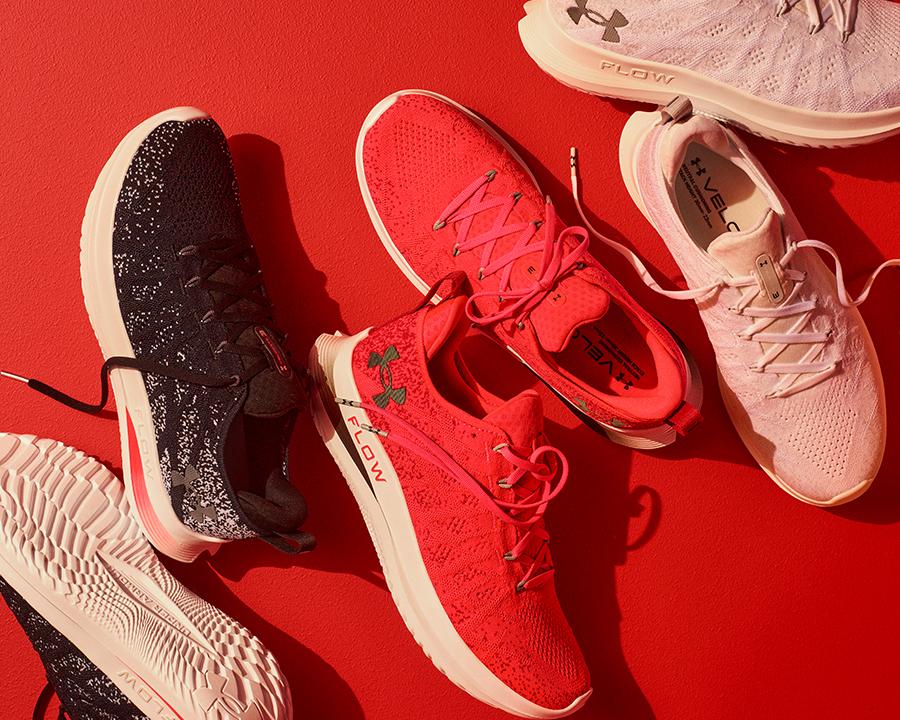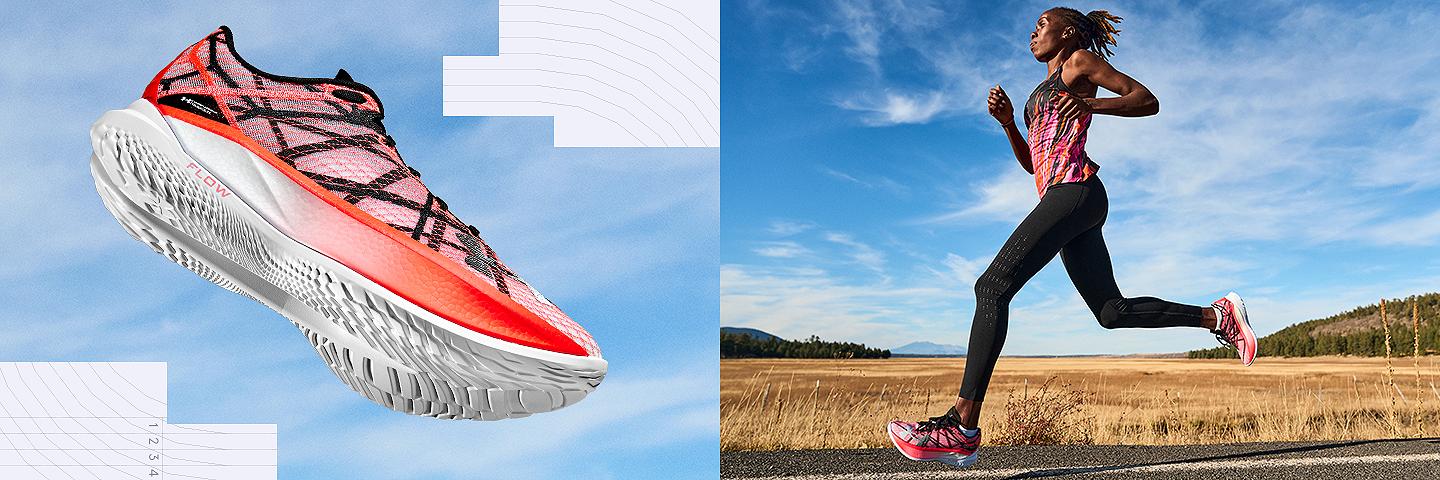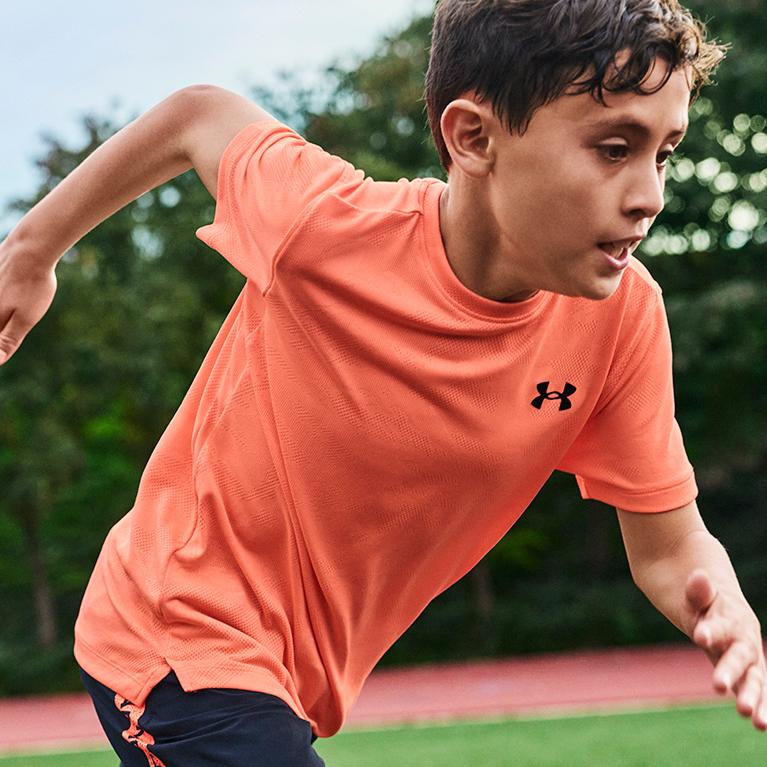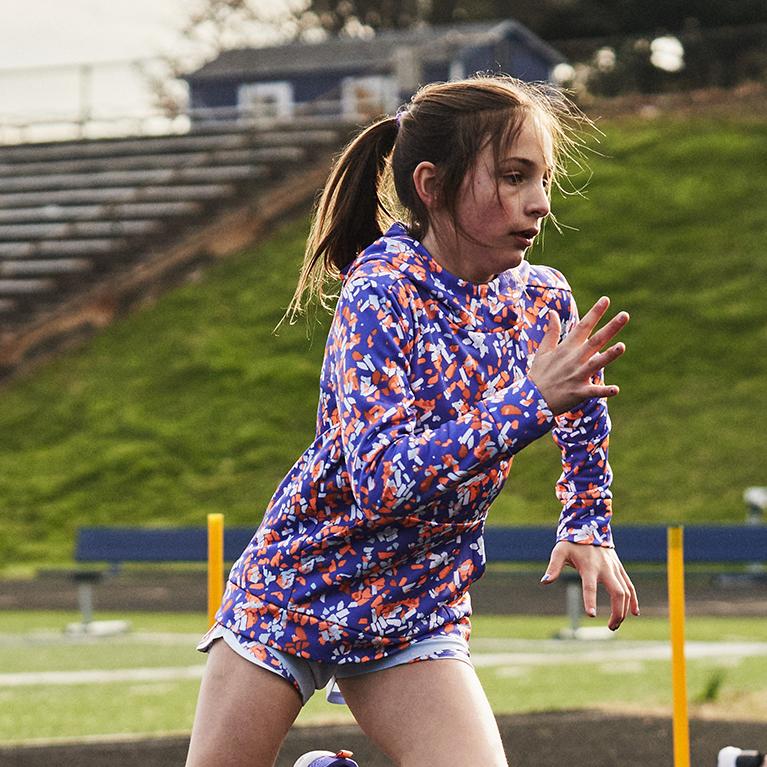How to Choose the Best Running Shoes
To improve your running and chase your athletic dreams, you need the right running gear. But that doesn’t mean you need to shape your pursuits to fit a pair of shoes—the shoes should be the right fit for you as an individual athlete. The perfect pair should help by fitting your ambitions and your body.
How to Choose the Best Running Shoes
To improve your running and chase your athletic dreams, you need the right running gear. But that doesn’t mean you need to shape your pursuits to fit a pair of shoes—the shoes should be the right fit for you as an individual athlete. The perfect pair should help by fitting your ambitions and your body.


When buying running shoes, here are three important things to consider:
1. GOALS: What are your running goals?
2. GAIT: What foot shape do you have and how does your foot strike the ground?
3. GRIP: Where do you plan on running, and how challenging will the terrain be?
When buying running shoes, here are three important things to consider:
1. GOALS: What are your running goals?
2. GAIT: What foot shape do you have and how does your foot strike the ground?
3. GRIP: Where do you plan on running, and how challenging will the terrain be?
Choosing a Running Shoe For Your Foot Shape & Gait
The perfect running shoes should give your ankle a full range of motion and provide enough space for toe movement. The “toe box” located at the front of the shoe can be designed for wide or narrow feet. Some runners prefer a large toe box, as it lets them use their toes to propel them forward forward. You’ll also need to consider your arch when purchasing new shoes. Athletes with flat feet may need more support in the form of stability shoes. Studies have shown that the right type of shoe for arch height depends on the individual. It’s always best to try news shoes on to see if they work for your feet.
Choosing a Running Shoe For Your Foot Shape & Gait
The perfect running shoes should give your ankle a full range of motion and provide enough space for toe movement. The “toe box” located at the front of the shoe can be designed for wide or narrow feet. Some runners prefer a large toe box, as it lets them use their toes to propel them forward forward. You’ll also need to consider your arch when purchasing new shoes. Athletes with flat feet may need more support in the form of stability shoes. Studies have shown that the right type of shoe for arch height depends on the individual. It’s always best to try news shoes on to see if they work for your feet.
Stability Running Shoes
Stability running shoes are designed to support runners who overpronate, or strike with their inner foot angled towards the ground. A good stability running shoe will lift the midsole with a supportive platform that encourages a more neutral foot strike. To find out if you pronate, film yourself or have a friend analyze your foot strike as you run a short distance. If your ankle bends slightly inward or you’re striking primarily on the inside of your foot, you are running with a pronated gait and could benefit from a shoe that provides extra support. In addition to finding a supportive pair of shoes, runners who have stability issues like foot pronation should practice a regular exercise routine built for runners who want to improve stability.
Stability Running Shoes
Stability running shoes are designed to support runners who overpronate, or strike with their inner foot angled towards the ground. A good stability running shoe will lift the midsole with a supportive platform that encourages a more neutral foot strike. To find out if you pronate, film yourself or have a friend analyze your foot strike as you run a short distance. If your ankle bends slightly inward or you’re striking primarily on the inside of your foot, you are running with a pronated gait and could benefit from a shoe that provides extra support. In addition to finding a supportive pair of shoes, runners who have stability issues like foot pronation should practice a regular exercise routine built for runners who want to improve stability.


Neutral Running Shoes
Neutral running shoes can be considered the “default” type of running shoe. They provide balance and flexibility, and suit most runners who don’t pronate or have stability concerns.
Neutral Running Shoes
Neutral running shoes can be considered the “default” type of running shoe. They provide balance and flexibility, and suit most runners who don’t pronate or have stability concerns.
Cushioned Running Shoes
Almost all running shoes contain some form of cushioning. Some studies have shown that higher cushioning improves running, but it depends on the runner. Less cushioning means a greater “feel” of the ground and, traditionally, a lighter weight shoe, which can help athletes who want to work on strength and performance. More cushioning in running shoes provides a more comfortable running experience by reducing impact.
Cushioned Running Shoes
Almost all running shoes contain some form of cushioning. Some studies have shown that higher cushioning improves running, but it depends on the runner. Less cushioning means a greater “feel” of the ground and, traditionally, a lighter weight shoe, which can help athletes who want to work on strength and performance. More cushioning in running shoes provides a more comfortable running experience by reducing impact.


Wide Running Shoes
Athletes with wide feet will be happy to know that there are many options for them. Wide running shoes come in a few different widths for varying foot sizes to accommodate all foot shapes.
Wide Running Shoes
Athletes with wide feet will be happy to know that there are many options for them. Wide running shoes come in a few different widths for varying foot sizes to accommodate all foot shapes.
Women’s Running Shoes
While many female-identifying runners opt for men’s running shoes, there are shoes designed specifically for a female foot. Specially-designed women’s running shoes accommodate the slightly different shapes of the heel and arch. And some, like UA’s, are designed by women who studied female biomechanics.
Women’s Running Shoes
While many female-identifying runners opt for men’s running shoes, there are shoes designed specifically for a female foot. Specially-designed women’s running shoes accommodate the slightly different shapes of the heel and arch. And some, like UA’s, are designed by women who studied female biomechanics.
Why Do Running Shoes Have Different Heel Drops?
Shoes have a wide range of heel heights, or “drops,” and some have none at all. The purpose of designing a shoe with a high or low heel height is to change the way your foot strikes the ground. A higher heel height shifts the strike away from the heel and toward the ball, while a lower heel drop more closely resembles a natural (i.e., barefoot) foot strike. Does this impact running efficiency? It depends on the person, and the jury’s still out. Regardless, a very low heel height does slightly increase the risk of injury according to one study. Regular runners may want to avoid shoes with a very low or nonexistent heel drop, but casual runners aren’t likely to experience this issue.
Why Do Running Shoes Have Different Heel Drops?
Shoes have a wide range of heel heights, or “drops,” and some have none at all. The purpose of designing a shoe with a high or low heel height is to change the way your foot strikes the ground. A higher heel height shifts the strike away from the heel and toward the ball, while a lower heel drop more closely resembles a natural (i.e., barefoot) foot strike. Does this impact running efficiency? It depends on the person, and the jury’s still out. Regardless, a very low heel height does slightly increase the risk of injury according to one study. Regular runners may want to avoid shoes with a very low or nonexistent heel drop, but casual runners aren’t likely to experience this issue.
Running Shoes for Different Types of Terrain
It’s important to consider where you’re running. Where you live, where you train, and where you run should affect your choice of running shoes. It’s important to find the best material and outsole grip, or tread, for your environment.
Running Shoes for Different Types of Terrain
It’s important to consider where you’re running. Where you live, where you train, and where you run should affect your choice of running shoes. It’s important to find the best material and outsole grip, or tread, for your environment.


Road Running Shoes
Road shoes are typically flexible, cushioned, and aerodynamic. They’re designed with a tread built to propel you forward on paved surfaces like concrete and asphalt. If you tend to run on pavement, these shoes are for you. You can certainly take road shoes onto soft, smooth trails and expect them to perform well. Just be careful about wearing them on rugged trails.
Road Running Shoes
Road shoes are typically flexible, cushioned, and aerodynamic. They’re designed with a tread built to propel you forward on paved surfaces like concrete and asphalt. If you tend to run on pavement, these shoes are for you. You can certainly take road shoes onto soft, smooth trails and expect them to perform well. Just be careful about wearing them on rugged trails.
Trail Running Shoes
If you train on uneven, rocky, or otherwise variable terrain, you’ll probably want a pair of trail running shoes. These specially-designed shoes are built to protect your feet from rocks, roots, and other hazards. They have a specialized tread that reduces slipping on soft dirt and smooth rock and stabilizes you on uneven trails. Trail running shoes’ durable outsoles help them grip onto difficult terrain, including mud. Be sure not to accidentally buy hiking shoes, which are heavier and often restrict ankle movement.
Trail Running Shoes
If you train on uneven, rocky, or otherwise variable terrain, you’ll probably want a pair of trail running shoes. These specially-designed shoes are built to protect your feet from rocks, roots, and other hazards. They have a specialized tread that reduces slipping on soft dirt and smooth rock and stabilizes you on uneven trails. Trail running shoes’ durable outsoles help them grip onto difficult terrain, including mud. Be sure not to accidentally buy hiking shoes, which are heavier and often restrict ankle movement.
Can I Do Other Activities Like Walking in Running Shoes?
You can definitely walk in your running shoes. However, if you walk a lot in shoes made for running, they’ll wear down in a way that reflects it. While the difference is minimal, the outsole and tread will start to match your walking gait rather than your running gait. This is more noticeable in trail shoes worn on paved walking paths, as concrete tends to wear down tread made for trails.
Can I Do Other Activities Like Walking in Running Shoes?
You can definitely walk in your running shoes. However, if you walk a lot in shoes made for running, they’ll wear down in a way that reflects it. While the difference is minimal, the outsole and tread will start to match your walking gait rather than your running gait. This is more noticeable in trail shoes worn on paved walking paths, as concrete tends to wear down tread made for trails.


Maintaining & Cleaning Your Running Shoes
While it’s difficult to prevent wear and tear in running shoes, there are a few things you can do to help keep your shoes in good shape for as long as possible. Regularly cleaning your running shoes is a great way to keep the material in good shape. Unless the manufacturer of your shoes says they are machine washable, take a warm, damp rag or soft sponge and a little dish soap and gently scrub away dirt and grime. There are two methods to clean the soles of your running shoes: wet and dry.
- Wet: Wipe the soles down with a wet paper towel or rag. You can also hose off the bottom of the shoes to remove caked dirt and mud.
- Dry: Use a scrubbing brush to briskly scrub dirt out of the grooves of the tread.
If you do clean your soles with water, be sure to let them dry outside. Never put them in the dryer, as the heat may affect the integrity of the shoe.
Maintaining & Cleaning Your Running Shoes
While it’s difficult to prevent wear and tear in running shoes, there are a few things you can do to help keep your shoes in good shape for as long as possible. Regularly cleaning your running shoes is a great way to keep the material in good shape. Unless the manufacturer of your shoes says they are machine washable, take a warm, damp rag or soft sponge and a little dish soap and gently scrub away dirt and grime. There are two methods to clean the soles of your running shoes: wet and dry.
- Wet: Wipe the soles down with a wet paper towel or rag. You can also hose off the bottom of the shoes to remove caked dirt and mud.
- Dry: Use a scrubbing brush to briskly scrub dirt out of the grooves of the tread.
If you do clean your soles with water, be sure to let them dry outside. Never put them in the dryer, as the heat may affect the integrity of the shoe.





